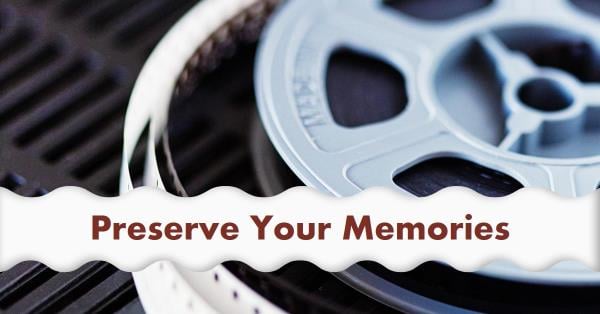
Converting VHS to Digital for Future Generations
Memories need to be preserved and made available now more than ever in an age of rapidly expanding technology. VHS cassettes, which were formerly widely used to capture noteworthy and everyday events, are becoming less and less relevant as time goes on. Therefore, in order to preserve these rare gems for future generations, it is important that VHS be converted to digital format. Reviving ancient VHS collections is now easier for consumers thanks to new digitizing processes. These priceless memories are preserved when they are converted from analog to digital format, and sharing them rapidly across numerous platforms and devices is made simple. Future generations will now be able to enjoy invaluable childhood milestones, meaningful celebrations, and treasured family memories thanks to the advantages of VHS to digital conversion. These items have all been expertly kept and are incredibly clear.
Methods for Converting VHS to Digital
Gone are the days when VHS tapes were a staple in every household. For now, they sit around in crates gathering dust and slowly deteriorating. But do not fret! We are able to preserve these valuable memories from the analog abyss because of technical advancement.
One popular method of converting VHS to digital media is to use a VHS-to-DVD converter. By putting your tapes onto DVDs, you may store them in a more modern format using these practical devices. Simply place the tape into the converter, switch on the DVD burner and the VCR, and see as the tape transforms into a digital file.
Another technique that is gaining popularity is digitizing VHS cassettes using video capture software. By connecting your VCR to your computer via an analogue-to-digital converter (ADC), you can record the material directly to your hard drive or another storage device. With this method, you have greater control over the video because you may edit and enhance it before saving it digitally.
Many companies provide VHS digital conversion services to people who need professional assistance. These experts have access to excellent resources that ensure the greatest results while preserving the audio and video quality throughout the digitization procedure.
Whichever method you choose, remember that time is of the essence when it comes to preserving old VHS tapes. The likelihood of lasting damage increases with the amount of time they are left alone and exposed to unfavorable conditions like heat or moisture.
So why not wait? Take hold of those long-forgotten keepsakes from the past and embark on an unmatched journey filled with nostalgia thanks to these incredible VHS-to-digital conversion techniques!
Maintaining Cultural Heritage via 16mm Film to DVD
Film has long been a valuable tool for capturing and preserving special moments. Pictures captured on 16mm film, whether they are from family vacations or historic events, hold a special place in our hearts. However, obtaining and watching these videos is becoming more and more difficult as technology advances.
That's where the process of converting 16mm film to DVD comes in. By digitizing these movies, we can ensure that future generations will be able to appreciate and experience their family history.
Before anything else, the original film reels are carefully cleaned and any deterioration is fixed. Following this, the film is converted to a digital format using specialized equipment.
16mm film to DVD preserves the image quality of these vintage films and facilitates easy sharing and accessibility among family members. You no longer need to use outdated projectors or go through old, dusty crates to recreate those memorable moments.
It is important to remember to preserve! Digital film reels are significantly more stable than physical ones, which can break down over time. If you transfer your 16mm films to DVDs or other digital storage devices, they will keep their quality for years, if not decades.
Therefore, whether you want to honor historical material from bygone times or save your own family memories, consider converting your 16mm films into a more accessible and secure medium like DVD. It's an investment in maintaining cultural heritage and implementing modern technologies!
Cinema Will Change With 4K Film Scanning
In addition to technology evolving quickly, the film industry is also undergoing significant change. The technique of digitizing and preserving movies for future generations has undergone a substantial change with the introduction of 4K film scanning in recent years.
4K film scanning, with its incredibly high resolution and stunning clarity, ensures that every detail captured on celluloid is faithfully replicated in digital form. This preserves the visual quality of vintage movies while also allowing for better viewing experiences on modern screens.
The first step in converting vintage film reels into a digital format is to clean and repair any damage or flaws on the original material. Following this procedure, the film is scanned using state-of-the-art equipment capable of capturing each frame at an extraordinarily high quality.
Experts use the benefits of digital technology to meticulously repair and color-grade each frame after scanning, ensuring that it maintains its original beauty. The result is an incredible visual experience that fulfills both the director's vision and the viewer's expectations.
One significant advantage of 4K film scanning is its ability to archive these cinematic treasures for posterity. With their incredibly high resolutions, movies may be easily adapted to other platforms without losing any of their quality or impact. This suggests that even as display technology advances, from virtual reality headsets to Ultra HD TVs, viewers will always have access to these timeless classics in the highest quality possible.
Furthermore, 4K film scanning helps us to save our cultural heritage for future generations. Because films document technological advancements, artistic expressions, and cultural mores from a wide range of historical periods, movies are incredibly valuable historical artifacts. We can ensure that these irreplaceable pieces of our common history will be accessible and loved for a long time by using digitization techniques like 4K film scanning.
